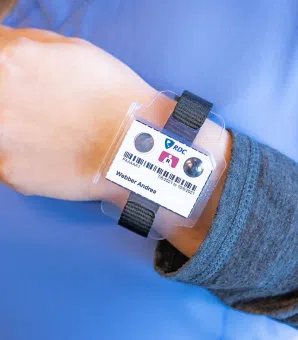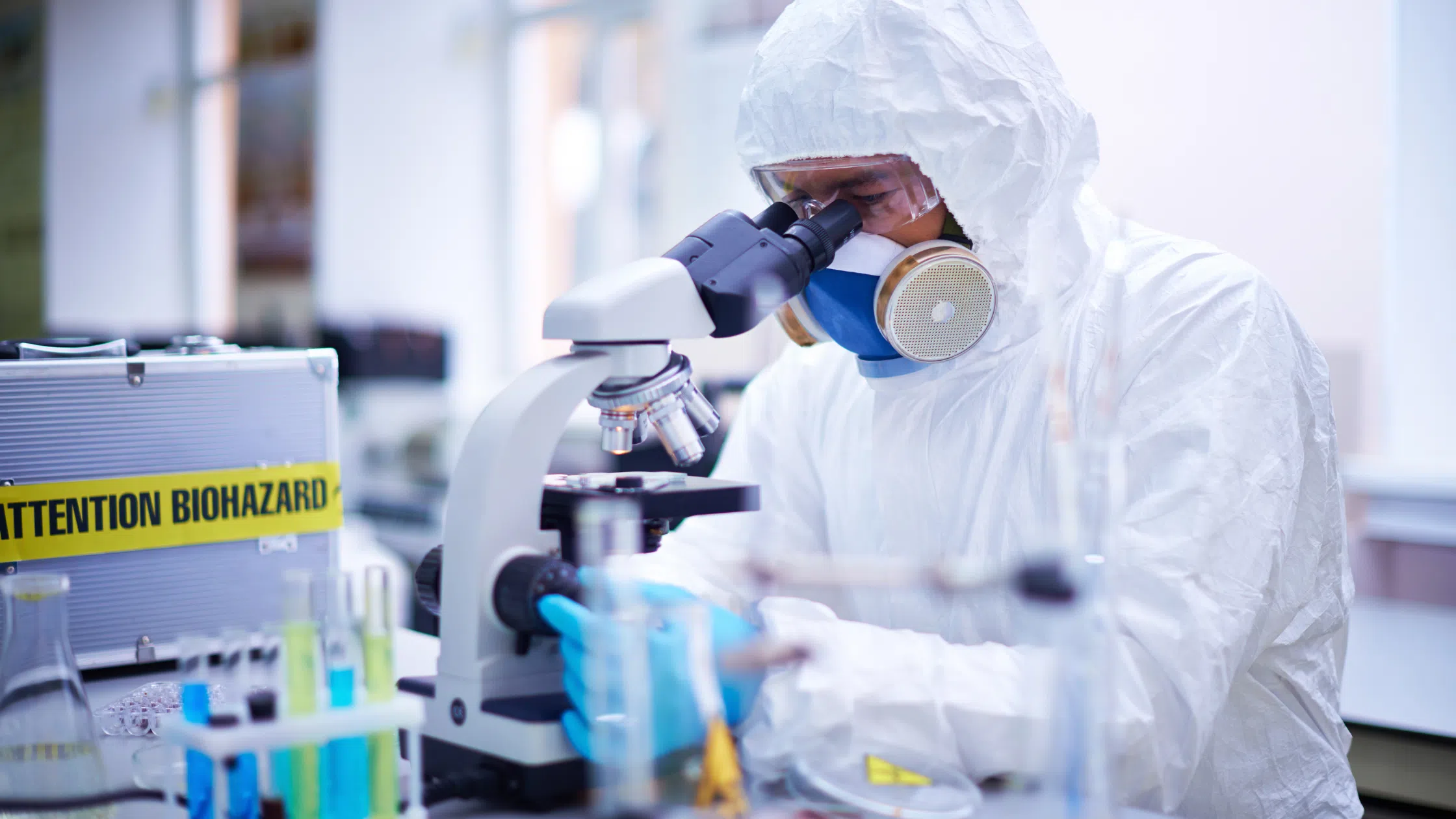
Dosimeter badge services for medical, dental, and veterinary businesses
Learn how Radiation Detection Company’s easy-to-use dosimetry solutions can boost the efficiency of your practice.

Radioactive materials can be helpful in diagnosing and/or treating illnesses and are also often used in medical research. While their uses for positive causes are well documented, the use of such materials must be regulated due to the dangers they pose if used incorrectly. That's where the Nuclear Regulatory Commission (NRC) comes in.
The NRC is an independent government agency in the United States tasked with regulating the use of radioactive materials and nuclear energy to protect the health of the general public. The NRC - and its predecessor, the Atomic Energy Commission - have regulated the medical use of radioactive materials since 1946.
In this article we will dive deeper into the importance of radioactive material license and its role in industries that interact with radioactive materials. We hope you find this informative, and as always, we look forward to hearing your feedback!
The regulations set forth by the Nuclear Regulatory Commission aim to ensure radioactive materials are used properly, and in a way that protects patients, medical workers, the public, and the environment.
In addition to the NRC, state and local agencies share the responsibility to oversee the uses of radiation in medicine. Radioactive material is regulated both by the NRC and Agreement States. Agreement States have signed agreements with the NRC allowing them to directly regulate the use of certain radioactive materials. These states oversee and issue licenses to users, which are generally medical centers, universities, well loggers, clinics, and doctors in private practice.
In non-Agreement States, the District of Columbia, Puerto Rico, and other U.S. territories, the NRC is responsible for licensing and overseeing medical uses. In addition to these responsibilities, the NRC must also ensure the defense and security of nuclear materials - i.e. nuclear power plants.
The NRC and Agreement States license facilities, authorize individuals to use radioactive materials, and develop regulations and guidance for corporations. These regulations also rely on inspections, investigations, and enforcement programs to ensure the safe use of radioactive materials. These rules in large part help shape the principles of a corporation's or entity's radiation safety program, as well as their contamination control procedures. For example, a laboratory storing radioactive materials in liquid form would wear gloves and monitor counter tops and hands to ensure radioactive materials are contained and not spread outside the posted area. For more on the safety practices of corporations, please refer to our recent blog, "Radiation Safety Programs: A Comprehensive Guide.

The NRC relies on a committee of medical experts for advice and to decide if changes to policy must be made. The Advisory Committee on the Medical Uses of Isotopes (ACMUI) meets twice a year with NRC staff to review current practices and investigate trends regarding the medical uses of radioactive materials. ACMUI members come from varied disciplines, and include a nuclear cardiologist, a nuclear medicine physician, two radiation oncologists, an Agreement State representative, a nuclear pharmacist, a therapy medical physicist, a medical physicist in nuclear medicine, a patients' rights advocate, a health care administrator, an FDA representative, and a radiation safety officer.
The Food and Drug Administration (FDA) reviews the safety and use of radiopharmaceuticals, as well as machines (like x-ray machines) that produce ionizing radiation, but do not create or use radioactive material. The NRC and the FDA have a Memorandum of Understanding, meaning both agencies have liaison officers, key managers, and technical personnel who coordinate responses to emergencies or specific events which are of mutual interest.
For diagnosis using radioactive solutions, a small amount of material is injected, inhaled, or swallowed. The material collects in the area being studied, where it emits photons. These photons can be seen by a gamma camera. The images from the camera can show an organ's function and composition. These images help physicians locate, identify, and measure tumors, or view other problems in an organ.
In therapeutics, radioactive materials are used to kill cancerous tissue, shrink a tumor, or provide pain relief to a patient. There are three main types of therapy in nuclear medicine:
Teletherapy targets cancerous tissue with an intense beam of radiation.
Brachytherapy uses lower activity sources sealed in "seeds" which are placed close to or within cancerous tissue. This occurs for example in the breast, prostate, or cervix. The seeds are injected or surgically implanted, and then removed once the patient has received the prescribed dose. Intravascular brachytherapy places small seeds into arteries by using catheters.
Therapeutic Nuclear Medicine uses high doses of radiation from materials that are injected into or ingested by the patient. For example, radioactive iodine has the ability to destroy or shrink a diseased thyroid.
Veterinary use covers diagnostic, therapeutic, and research uses of radioactive drugs and devices. The licenses in these cases are most commonly issued for the treatment of domestic pets and non-food animals. At the present time, no radioactive veterinary drugs have been approved for use in animals intended for human consumption.

Currently almost one-third of patients admitted to hospitals are diagnosed or treated using radiation or radioactive materials. This branch of medicine is known as nuclear medicine, and the radioactive materials used are called radiopharmaceuticals.
In developing and implementing the necessary regulations, the NRC adheres to its Medical Use Policy Statement. Which states that the NRC will:

There are MANY use cases for radioactive materials in varying industries, including but not limited to:

Universities, colleges, high schools, and other academic institutions most commonly use nuclear material in classroom demonstrations, laboratory experiments, and research. These programs may vary in size from small to large programs. These facilities are appropriately licensed depending on the type of materials they possess.
At RDC, we’re in the business of keeping you and your employees safe on the job. Want to learn more about RDC’s radiation safety solutions? Please visit our Solutions page to view our full suite of offerings. Have a question that we didn’t address in this article? Please reach out to our Customer Care team, and one of our specialists will be happy to assist you.
Learn how Radiation Detection Company’s easy-to-use dosimetry solutions can boost the efficiency of your practice.